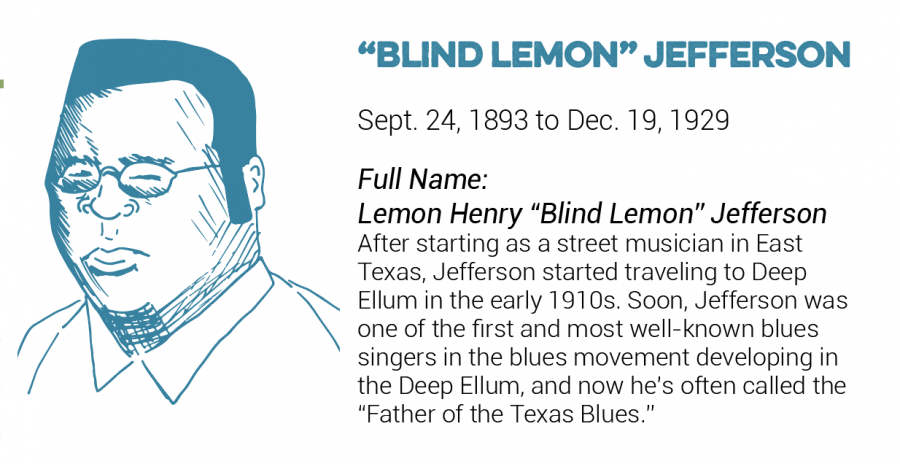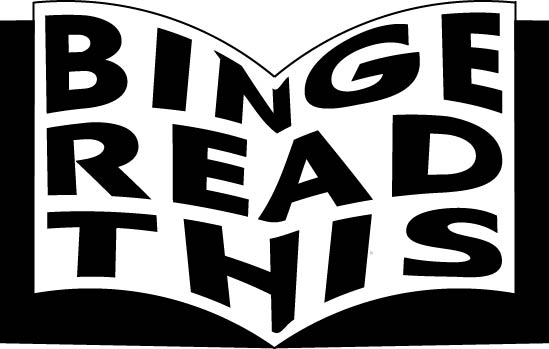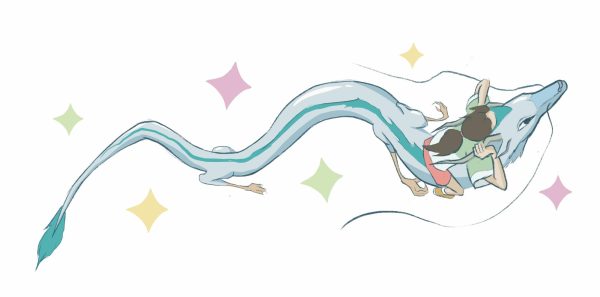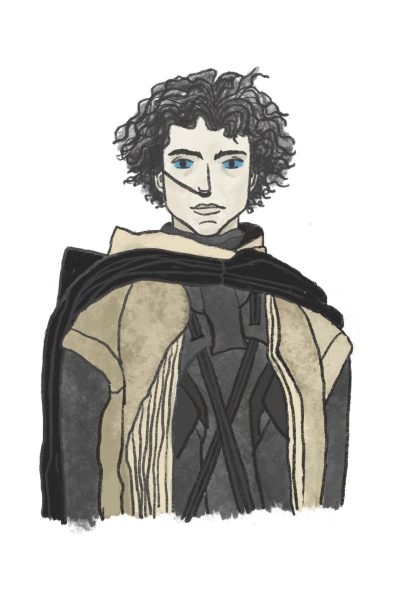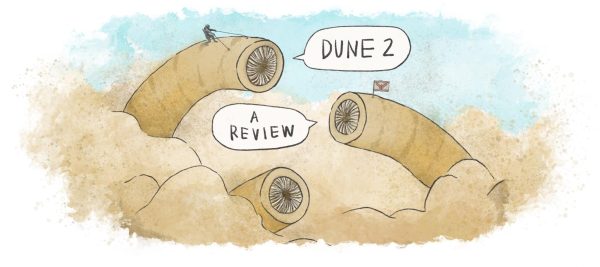Diving into Dallas’ deep well of blues history
September 2, 2021
Music is among the many things Dallas is known for. About a mile from downtown Dallas is an oasis rich with blues history – Deep Ellum. Chords from the past echo and inspire future generations to create new music.
Don Ottensman, known as Don O, has hosted the Texas Blues Radio Friday night 6 p.m. segment on KNON 89.3 FM since 1983. There, Ottensman spins records paying respect to blues legends.
His first exposure to the blues was listening in the car with his parents to Jim Lowe on WRR-AM’s Kat’s Karavan radio show.
Ottensman said he remembers never wanting to leave the car. The young Ottensman was entranced by the blissful and mystifying tones of the blues.
Decades later, he spins the blues through the airwaves for others to reminisce, experience and take inspiration from.
Ottensman, who won the 2019 Memphis Keeping the Blues Alive Award, said: “I’d say the blues started in Texas and around here as early as anywhere. Blind Lemon Jefferson was first here in the teens and one of the very first blues songs ever written was titled ‘The Dallas Blues.’ It was a very big hit and went through multiple printings.”
CROSSROAD ORIGINS
Ottensman said that in 1912, Hart A. Wand overheard a worker in Oklahoma City expressing feeling homesick for Dallas. This inspired Wand to write a song initially made for the piano. Lloyd Garret contributed lyrics to the tune in 1918. “Deep Elm Blues” debuted in 1927 and was recorded by Paul and Leon Cofer, brothers who went by the stage name Georgia Crackers.
Blues music began to spread throughout Dallas, specifically in the small community of Deep Ellum.
According to a 1993 WFAA news special, Deep Ellum was the place to be during the Prohibition era. Deep Ellum was one of the few places in Texas where Eastern Europeans and Black people were not refused or pursued. The locals shopped during the day cleared out before the robust nightlife took over the dimly lit streets.
One of the most revered blues icons to start in Dallas was Lemon Henry “Blind Lemon” Jefferson, Ottensman said. Jefferson recorded “Long Lonesome Blues” in 1926 and became the first commercially successful blues artist.
Brian Calway, a blues guitarist in Dallas, said the greats of Texas were Jefferson, T-Bone Walker, Freddie King, Mance Lipscomb, Samuel John “Lightnin’” Hopkins, Albert Collins and Johnny “Guitar” Watson.
“T-Bone Walker grew up in Oak Cliff and was Jefferson’s protégé in his teens. T-Bone would lead Jefferson to venues around Deep Ellum,” Calway said. After Jefferson died, Walker recorded “Trinity River Blues” and “Wichita Falls Blues” in Dallas using the stage name “Oak Cliff T-Bone’’ in 1929.
NOTES CARRY OUT OF DALLAS
Walker took the blues genre to California in 1935 where he became the first electronic blues guitarist.
Piano emerged as an instrument of choice for blues musicians at the time. Calway said blues pianists traveled town to town playing wherever they found an instrument.
“A lot of the blues started with the piano, because it was a loud instrument,” Calway said.
Many talents developed their skills in Dallas, later taking their acts out of state. These included Jefferson, Walker, and Stevie Ray and Freddie Vaughn, Ottensman said.
“There’s so much here that nobody knows about,” Ottensman said. “We keep talking about guys that are dead and gone. That’s cool and I love the history, but there’s so many really, really talented people here right now that the public doesn’t know about and it makes me mad.”
Ottensman said he believes Dallas is overlooked because the city does not embrace its blues roots. “The facts are the facts,” Ottensman said. “You can hype it anyway you want. … It’s always been here, deep and broad. People just don’t know it.”
REMINISCING THE PAST
Many music venues have closed in the past decade near downtown Dallas, including the Lizard Lounge, the Prophet Bar and the Door while others managed to escape that fate.
In 2011, the First Presbyterian Church of Dallas bought and restored the Art Deco style 508 Park Avenue, saving a historic blues landmark. “They’ve done a really great job fixing that place up,” Ottensman said.
508 Park, formally known as the Warner Bros Exchange Building, functioned as a receiving and distribution center for records and films in the 1930s.
In 1937, Brunswick Records producer Don Law used the third floor of the building as a recording studio where Robert Johnson and Bob Wills recorded. Law produced over 800 recordings during the late 1930s in the landmark building. In 2012, they celebrated the 75th anniversary of Johnson’s recording session.
The building in Harwood Historic District of downtown Dallas stands to this day.
“Blind Lemon” Jefferson
Sept. 24, 1893 to Dec. 19, 1929
Full Name: Lemon Henry “Blind Lemon” Jefferson
After starting as a street musician in East Texas, Jefferson started traveling to Deep Ellum in the early 1910s. Soon, Jefferson was one of the first and most well-known blues singers in the blues movement developing in the Deep Ellum, and now he’s often called the “Father of the Texas Blues.”
T-Bone Walker
May 28, 1910 to March 16, 1975
Full Name: Aaron Thibeaux “T-Bone” Walker
Reportedly learned the blues guitar from “Blind Lemon” in exchange for being his guide. In 1929, Walker’s recording debut – billed as Oak Cliff T-Bone – Columbia Records released the single “Wichita Falls Blues” with the B-side “Trinity River Blues.”
Freddie King
Sept. 3, 1934 to Dec. 28, 1976
King is considered as one of the “Three Kings of the Blues Guitar” – along with Albert King and B.B. King – not related. Resting place: Sparkman-Hillcrest Memorial Park Cemetery, Dallas, Texas.
Lightnin’ Hopkins
March 15, 1912 to Jan. 30, 1982
Full Name:
Samuel John “Lightnin’” Hopkins
In the ’20s and ’30s, Hopkins played guitar in West Dallas and Deep Ellum clubs. The legendary blues guitarist known for songs such as “Goin’ to Dallas to See My Pony Run,” “Mojo Hand” and “See That My Grave Is Kept Clean.”

